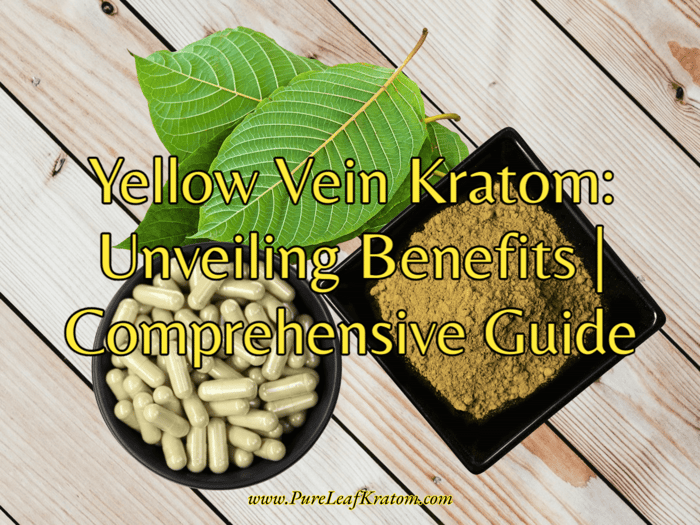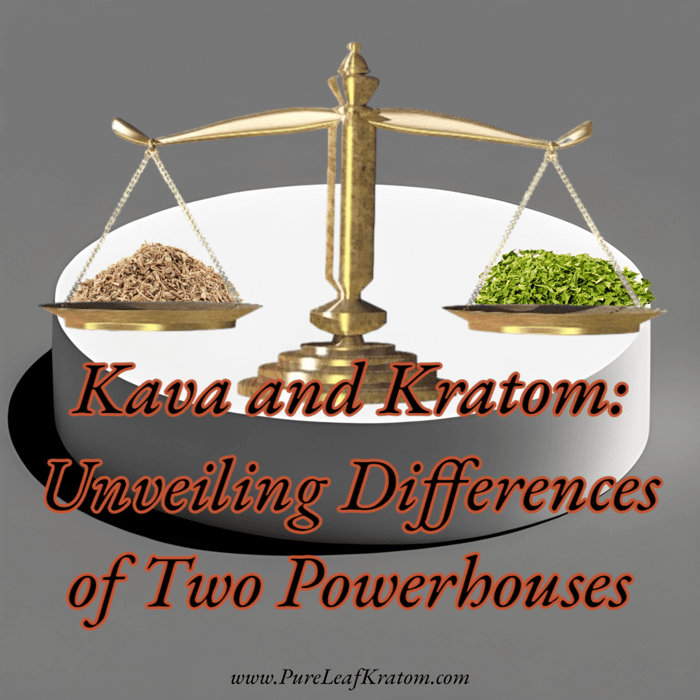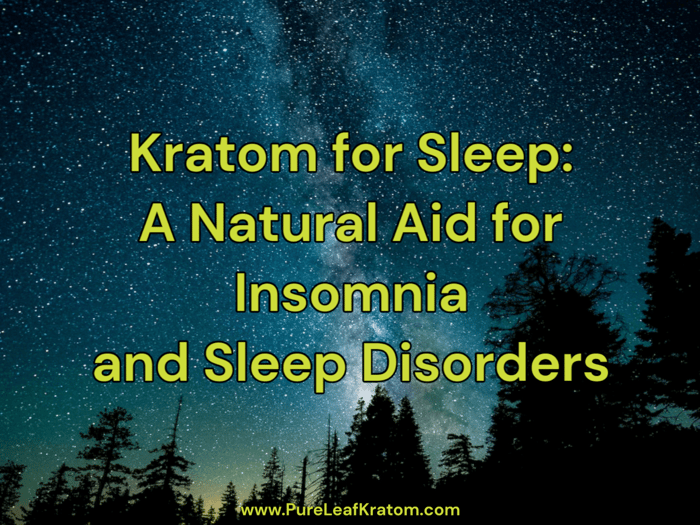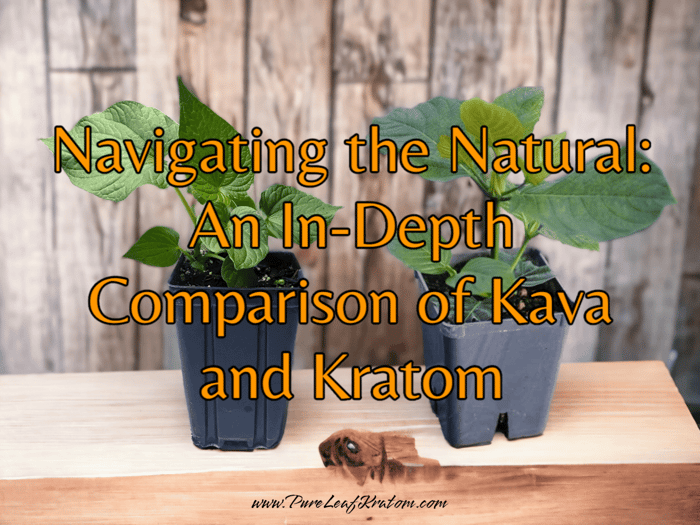
Navigating the Natural: An In-Depth Comparison of Kava and Kratom
Navigating the Natural: Kava and Kratom in Perspective
In recent years, the Western world has seen a surge in the popularity of herbal remedies. Prominent among them are the potent botanicals - Kava and Kratom. These plants, with roots in ancient ethnic traditions, have grown in appeal due to their distinctive psychoactive properties and are now regular features as non-alcoholic alternatives in bars and cafes.
Interestingly, while often found side-by-side, Kava and Kratom represent two distinct ethnobotanical profiles. Kava, native to the Pacific regions, is derived from the root of the Piper methysticum plant. It is lauded for its sedative properties, inducing relaxation and euphoria, and offers analgesic effects. Kratom, on the other hand, traces its lineage to Southeast Asia, where it was harvested from the leaves of the Mitragyna speciosa tree. This herb is an unusual stimulant - in small doses, it enhances mood and energy, whereas at higher quantities, it functions as a potent pain reliever and sedative.
Setting the Scene: Unwrapping Kava and Kratom
At a casual glance, Kava and Kratom may seem synonymous. Indeed, they share a gemeinschaft of being plant-based substances employed in alternative medicine. Yet, deeper scrutiny reveals stark differences - not just in their botanical origins and pharmacological actions, but also in the potential dangers they present, particularly in relation to substance abuse and addiction. Kratom, for instance, is notably more susceptible than Kava to abuse and dependency issues.
In this scramble to seek natural alternatives, there's often a missing component - comprehensive, evidence-backed data on these substances. This void is problematic, as it can misguide consumption patterns and incite misuse. With this article, we aim to fill up this gap by illuminating the individual and comparative aspects of Kava and Kratom, enabling informed choices and promoting responsible use.
Taking a Closer Look at Kava and Kratom
In the upcoming sections, we delve deeper into each botanical heavyweight. Starting with Kava, we will examine its Pacific roots, the famed transformation of its roots into a calming beverage, and the keys to its potency - the active compounds known as kavalactones. Moving onto Kratom, we will explore its Asian heritage, its unique interaction with brain receptors, and the role its compounds play in its intriguing dual capacity of being a stimulant or a sedative, relying on dosage as the deciding factor.
Additionally, in the spirit of holistic understanding, we will confront the less glorious aspects - the potential risk factors, side effects, and safety precautions associated with Kava and Kratom. It's our belief that knowledge, bolstered by personal experiences and scientific data, can guide individuals to maximise the benefits while minimising the risks of these potent, plant-based substances.
Krave Kava 2oz
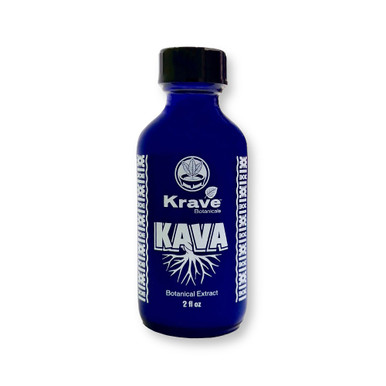
$7.95
Krave Kava 2oz Discover Krave Kava 2oz, a remarkable herbal supplement that introduces you to the world of Kava in a convenient and potent form....… read more
Exploring Kava
Steeped in history, the use, cultivation, and effects of Kava offer a rich tapestry of tradition and medicinal potential. From its Pacific Island roots to its current status as a popular relaxing beverage, Kava's journey is a complex blend of ethnobotany and modern science.
Historical Use of Kava in Pacific Communities
Ceremonial rites and daily life in the Pacific communities have long been intertwined with the use of Kava. This bitter beverage, derived from the Kava plant's dried and crushed root, provides relaxing psychoactive effects. In these communities, the variant consumption rates ranging between 750 to 8000 mg of kavalactones daily, indicates the integral nature of Kava in their socio-cultural fabric.
Traditional ceremonies and rituals involving Kava
As an element of socio-religious significance, Kava has marked its presence in traditional ceremonies and rituals. The ceremonial drink prepared from the Kava root, known for its sedative and anesthetic properties, not only facilitates interaction but also forms an integral part of religious practice for Pacific Islanders.
The socio-cultural significance of Kava
Kava has certainly outgrown its traditional bounds and is now recognized more broadly as a natural supplement and remedy for ailments such as anxiety, insomnia, and muscular pain. Nevertheless, the Pacific Islanders' historical recognition of Kava's restorative abilities underscores the sustained relevance of this potent herbal remedy.
The Botanical Origins and Cultivation of Kava
The cultivation process of Kava, native to the Pacific Islands, has evolved over centuries from the indigenous methodology to modern farming practices ensuring product quality and characterization of components.
Extraction and Processing of Kava plant
Undoubtedly, the true strength of Kava lies in its active compounds, the kavalactones. These compounds are responsible for the health benefits, and their extraction involves a carefully executed process where the Kava root is dried, ground, and mixed with water.
Chemical Constituents of Kava: Overview of Kavalactones
Possessing an array of health benefits, Kava owes its potency to its active compounds known as kavalactones. The blend of kavalactones holds the key to Kava's psychoactive effects. As a mood enhancer, muscle relaxant, and tool for anxiety relief, the kavalactones tap into a wide spectrum of human well-being.
Types and functions of major Kavalactones
While multiple types of kavalactones are present in Kava, it also exhibits variations in their proportion, influencing the overall impact of the beverage.
How the blend of Kavalactones influence Kava's effects
Considering the interaction of these various kavalactones comprehensively provides a deeper understanding of the effects, ensuring we can harness the health benefits wisely and safely.
Administration methods: Traditional and Modern practices
While traditional use hinged on consumption of a prepared beverage, modern methodologies have expanded to include Kava as an anti-anxiety medicine in daily servings of around 100-300 mg kavalactones.
Kava as a Relaxing Beverage: Popularity and Perception
As Kava continues to gain a wider audience, its appeal as a relaxing beverage is on the rise. Despite some reports of rare cases of liver toxicity, which are typically associated with non-traditional forms, its popularity persists. It's a testament to the evolving perception of Kava, framed by both its tranquilizing properties and medicinal reputation.
Kavalicious Kava Extract Drink Mix
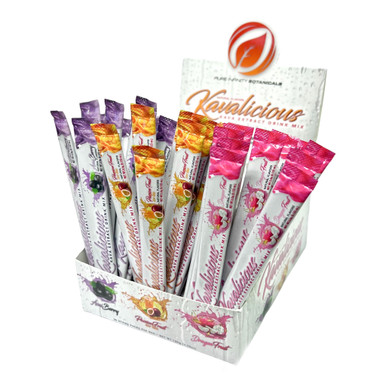
$9.95
Kavalicious Kava Extract Drink Mix We are happy to debut Kavalicious Kava Extract Drink Mix! This unique product offers a tasty and convenient way to...… read more
Exploring Kratom
Originating from Southeast Asia's steamy jungles, kratom is a tropical tree with a deep-rooted history in alternative medicine. Known for its paradoxical effects of both stimulation and sedation, this herbaceous plant offers an intriguing blend of qualities with multifold uses.
Historical Use of Kratom in Southeast Asian Communities
Kratom, or Mitragyna speciosa as it is scientifically known, had its humble beginnings as a natural remedy within Southeast Asian communities. This sturdy plant was typically accessed by manual laborers, who would chew the leaves to combat fatigue and increase productivity. Moreover, it was a common remedy used by rural folk to self-treat ailments such as diabetes, diarrhea, fevers, and pain. During periods of opium scarcity, kratom emerged as a viable substitute, gaining popularity for its opiate-like effects while being readily available.
Despite kratom being banned in several Southeast Asian countries, this potent botanical continues to maintain a strong following. It's still favored by many village workers for its ability to bolster physical tolerance to labor, and also by polydrug users looking to soothe opiate withdrawal symptoms or decrease their opiate intake.
Botanical Origins and Cultivation of Kratom
As part of the Mitragyna genus, kratom shares its lineage with several other species used traditionally as topically applied painkillers. Its own versatile leaves, however, are consumed internally to treat several illnesses, serving as a natural buffer against fatigue, diarrhea, and pain while also doubling as a mild sedative.
Whole Herbs Kratom Capsules Yellow Indo

$9.69
Whole Herbs Kratom Capsules Yellow Indo Crafted to perfection, Whole Herbs Yellow Indo Kratom Capsules stand as a testament to quality and nature's bounty. A...… read more
Chemical Constituents of Kratom: Importance of Mitragynine and 7-hydroxymitragynine
Digging deeper into kratom’s chemical makeup, the alkaloids mitragynine and 7-hydroxymitragynine take center stage. These compounds serve as both stimulants and opioids, making them crucial to the plant's appeal. Interestingly, while mitragynine does not appear to be inherently rewarding or aversive, 7-hydroxymitragynine can have aversive effects at higher doses, thereby hinting at kratom's complex, dose-dependent nature.
Concerns arise, however, at the prospect of commercial kratom products being adulterated with artificially high levels of 7-hydroxymitragynine. Given that this alkaloid has been found to be 13 times more potent as an analgesic than morphine, such adulteration may exacerbate kratom's potential side effects and addiction risks. It's worth noting that both mitragynine and 7-hydroxymitragynine activate the brain's opioid receptors, which are responsible for the plant's potential to trigger tolerance, withdrawal, and dependence issues with prolonged use.
Consumption methods: Traditional and Modern
While the traditional methods of ingestion—chewing raw leaves or brewing them in tea—remain popular, there has been a shift towards modern methods that cater to global audience. These typically involve the ingestion of capsules or powders, reflecting the fact that kratom has transcended cultural borders to establish itself as a potent natural remedy and mood enhancer.
Kratom's Dual-role as a Stimulant and Sedative: Understanding the Paradox
Kratom's power lies in its dual act as both a stimulant and a sedative, a paradox rooted in its dosage. At low doses, it behaves as a stimulant, keeping fatigue at bay and enhancing productivity. Conversely, in higher doses, it takes on the role of a potent analgesic and sedative, offering relief from pain, anxiety, and insomnia while also acting as a muscle relaxant. However, with these benefits come the risks of potential substance abuse, overdose, and withdrawal symptoms, underlining the need for caution in its use.
Pure Leaf Kratom Shot Liquid Extract
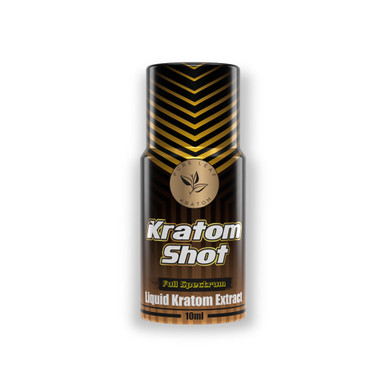
$7.95
Pure Leaf Kratom Shot Liquid Extract Get your daily dose of Kratom with our Pure Leaf Kratom Shot Liquid Extract! Looking for a potent and...… read more
Comparing Kava and Kratom
Legality Status of Kava and Kratom
Although shared similarities and uniqueness in their chemical makeup, Kava and Kratom take distinct paths concerning their legality status. Personal experiences vary, with each substance playing a key role in alternative medicine and recreational use around the world.
The U.S perspective: DEA's stance
Kava, with its rich Polynesian roots and calming properties, has marked its territory within the acceptable legal frame in the U.S. Contrarily, Kratom's legality wears a shroud of ambiguity and stringent regulation [source].
Legal Status in other countries
The legal landscape varies across national boundaries, reflecting diverse societal and governmental beliefs concerning these potent herbal substances. It is crucial to understand the legality status in one’s country to avoid unintentional violations.
Comparative Analysis of Active Compounds
While Kava and Kratom are derived from distinct ethnobotanical origins, they boast a similar pharmacological stance, credited to the presence of their unique active compounds. Kava packs a league of active ingredients known as kavalactones, with kavain staging dominancy. These compounds induce serenity and stress relief, promoting a sense of relaxation. Conversely, Kratom is fueled by the alkaloids mitragynine and 7-hydroxymitragynine, which interact with opioid receptors to radiate energy, coupled with sedative effects [source].
The exclusive compounds give each plant unique medicinal properties, whether it be anxiety relief or pain management. It's essential to recognize the difference in potency, chemical structures, and the associated safety precautions when considering these substances as natural supplements for health benefits.
Pure Infinity Botanicals Kava Extract 6 Tablets
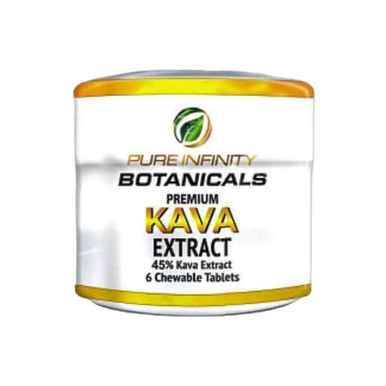
$19.95
Pure Infinity Botanicals Kava Extract 6 Tablets Pure Infinity Botanicals is committed to delivering top-tier natural products designed to elevate your daily wellness routine. Pure...… read more
Effects and Safety Reputation: A Comparative Analysis
Despite the marriage of similarities between Kava and Kratom, public perception varies significantly. Adding to the intrigue is the varying effects they cast on mental and physical health. Both find substantial importance in alternative medicine for their ability to provide anxiety relief, act as muscle relaxants, and contribute to pain management.
The consumption of Kava leads to the alleviation of psychological stress and induces a state of relaxation without significant intoxicating effects. On the other hand, Kratom serves the dual purpose of a stimulant and a sedative. The downsizing factor is that Kratom, despite its beneficial aspects, hosts the potential for substance abuse and addiction due to the nature of its alkaloids interacting with opioid receptors [source].
Potential Risk Factors, Side Effects, and Safety Precautions
With the increasing popularity of these botanical wonders also comes the underline of potential risk factors, which requires thorough understanding and awareness. Both Kava and Kratom have been associated with cases of hepatotoxicity, potentially leading to liver damage at high doses. The associated side effects of nausea, dizziness, and potential toxicity are often overstated by the many who find solace and substantial benefits in their consumption [source].
However, exercising caution is imperative when navigating the world of natural supplements, with an emphasis on adhering to dosage guidelines. These powerful plants carry immense potential but should be utilized with knowledge and respect for their inherent strengths and possible risks.
Role of Kava and Kratom in Healthcare
Given their respective properties, both Kava and Kratom have found a significant place in healthcare as products of alternative medicine. Together, they offer a number of potential benefits for managing various health conditions, from anxiety and stress to physical pain and muscle tension.
Kava and Kratom as Alternative Tools for Anxiety Relief and Mental Health
Emerging research underscores the potential of Kava and Kratom in mental health, as alternative tools for alleviating anxiety and mood disorders. While scientific studies remain ongoing, anecdotal evidence and traditional uses suggest their effectiveness in promoting a state of calm and relaxation.
Muscular Relaxation and Pain Management
Both Kava and Kratom have historical uses as a muscle relaxant and for pain management. The active compounds-however differ vastly in effect. Whereas, Kratom's alkaloids like mitragynine and 7-hydroxymitragynine have been known to possess opioid-like analgesic and euphoric properties, kavalactones in Kava are responsible for its calming and sedative effects. Despite reported health benefits, their potential hepatotoxicity at high doses makes the careful administration of these herbs crucial for safety.
Usage as Natural Supplements and Mood Enhancers
Known for their mood-enhancing effects, Kava and Kratom are often used as natural supplements. Despite growing popularity, they require careful consumption due to their psychoactive constituents and the accompanying risks. The need for further evidence-backed research goes hand in hand with understanding their future possibilities.
Dosage Guidelines for Kava and Kratom
In terms of dosage, the concept of "Noble Kava" and "Premium Kratom" is essential. The effects of these substances depend significantly on the dosage, with specific ranges associated with distinct impacts. For Kava, an effective and safe daily dose falls in the range of 120-210 mg of kavalactones. For Kratom, lower doses of a few grams have stimulant effects while moderate doses of 5-15 grams produce opioid-like effects and higher doses of 15+ grams increase side effects. As always, these figures should serve as guidelines, and individuals should consult professionals for precise dosage instructions.
Overall, while Kava and Kratom present useful alternative tools, they also come with significant concerns about potential substance abuse, side effects, and drug interactions. Careful consumption, increased public awareness, and future research are pivotal to maximize the health potential of these potent botanicals.


